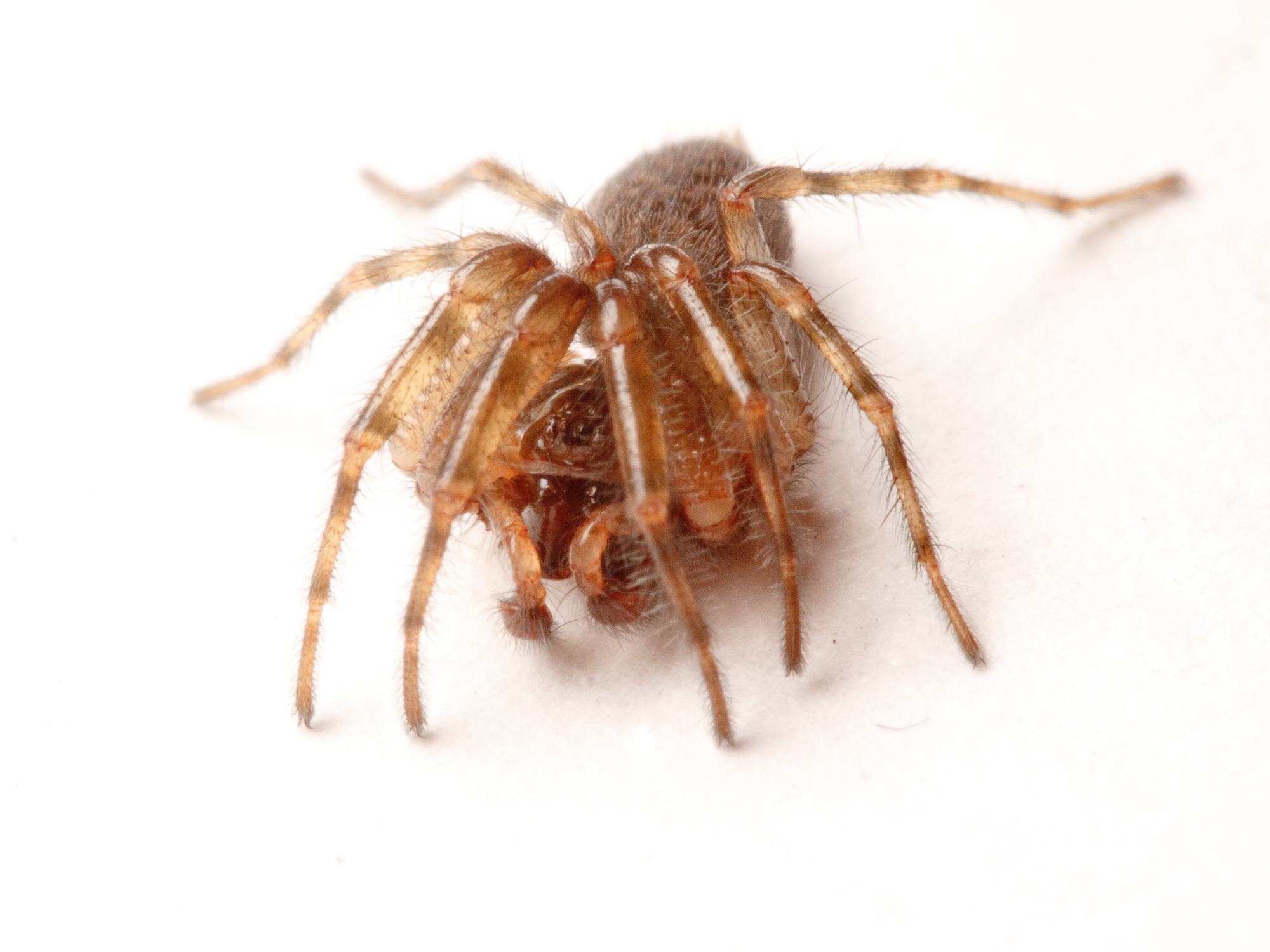Last weekend, I joined a group of fellow arachnophiles for a day at Burns Bog. We did not achieve our goal of finding the rare ground spider Gnaphosa snohomish (a bog specialist), but instead we met a very common spider that is nonetheless not well known: a comb-tailed spider in the family Hahniidae.
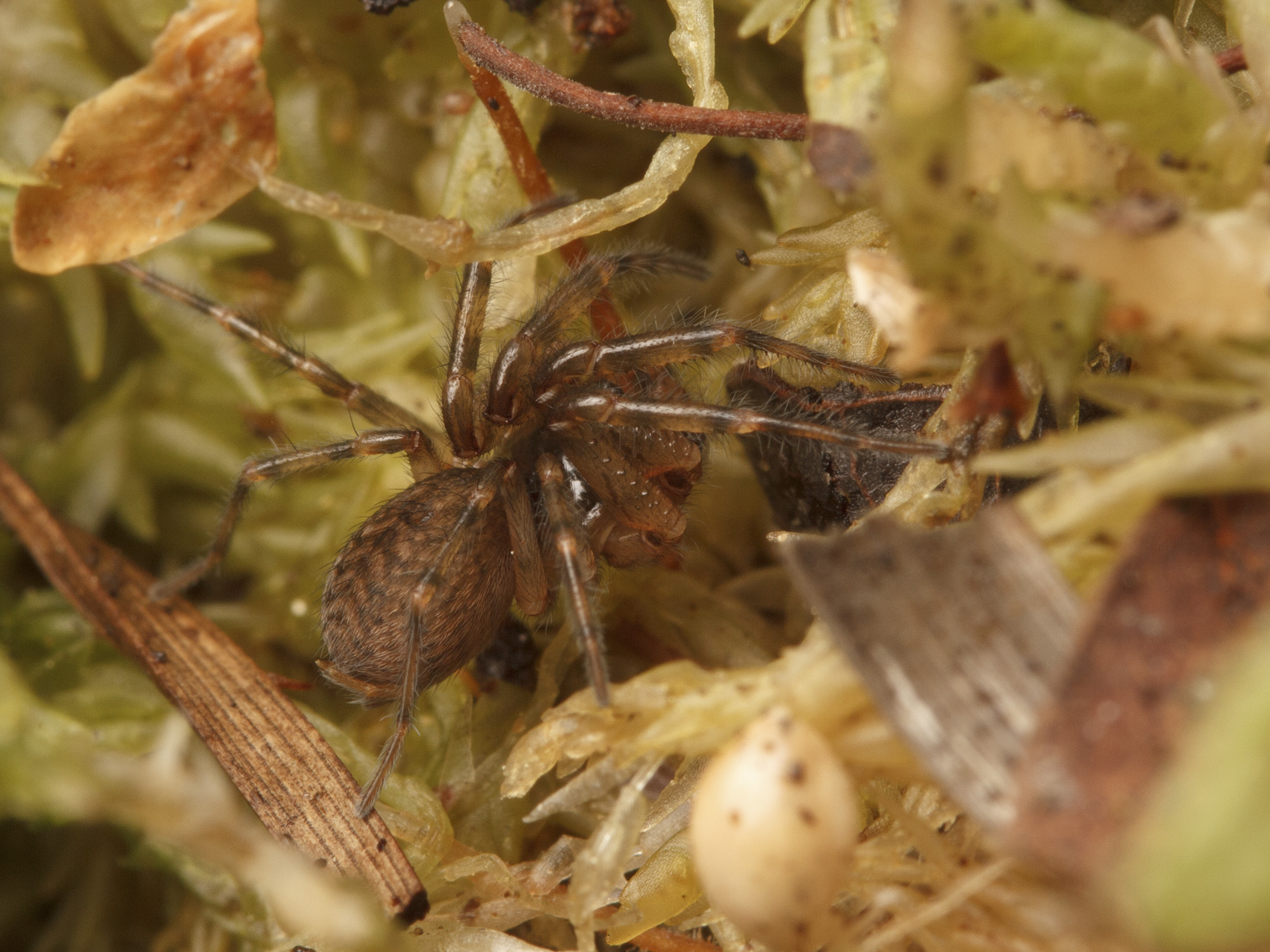
Neoantistea magna, a common yet mysterious forest-dweller (photo Sean McCann).
A distinguishing feature of spiders in the subfamily Haniinae is the arrangement of the spinnerets in a single row like the teeth of a comb – thus the common name.
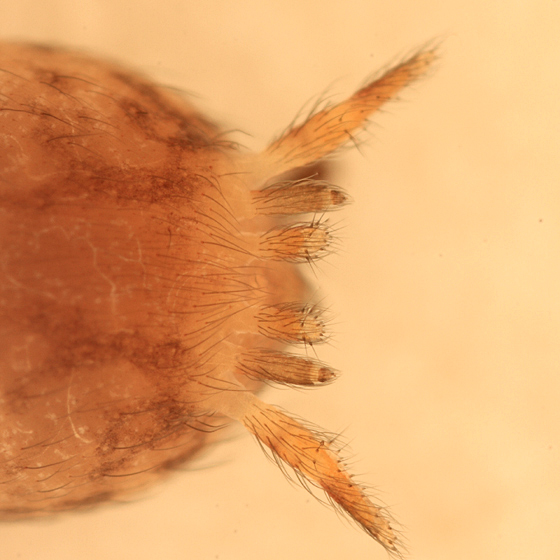
The arrangement of the spinnerets of ‘comb-tailed’ spiders in the subfamily Hahniinae. (Photo by Tom Murray, licensed under CC BY-ND-NC 1.0)
I generally think of spiders as being one of two basic types: wanderers or web builders. The wanderers include visually hunting ground dwellers like wolf spiders, whereas web building spiders are sit-and-wait predators that rarely leave their silken snares. This is overly simplistic, of course, but asking “web or not?” is often a useful first step in classifying spiders. The genus Neoantistea, however, gave me a first encounter with members of an intermediate group known as vagrant web builders.
The sheet webs of Neoantistea spiders are tiny – typically less than 5 cm across. They are built in moss or across shallow depressions such as those formed by the tracks left by animals walking on soft ground. The diminutive spiders (their total body length is less than 5 mm) live under their webs, retreating into crevices in the litter or moss when disturbed.
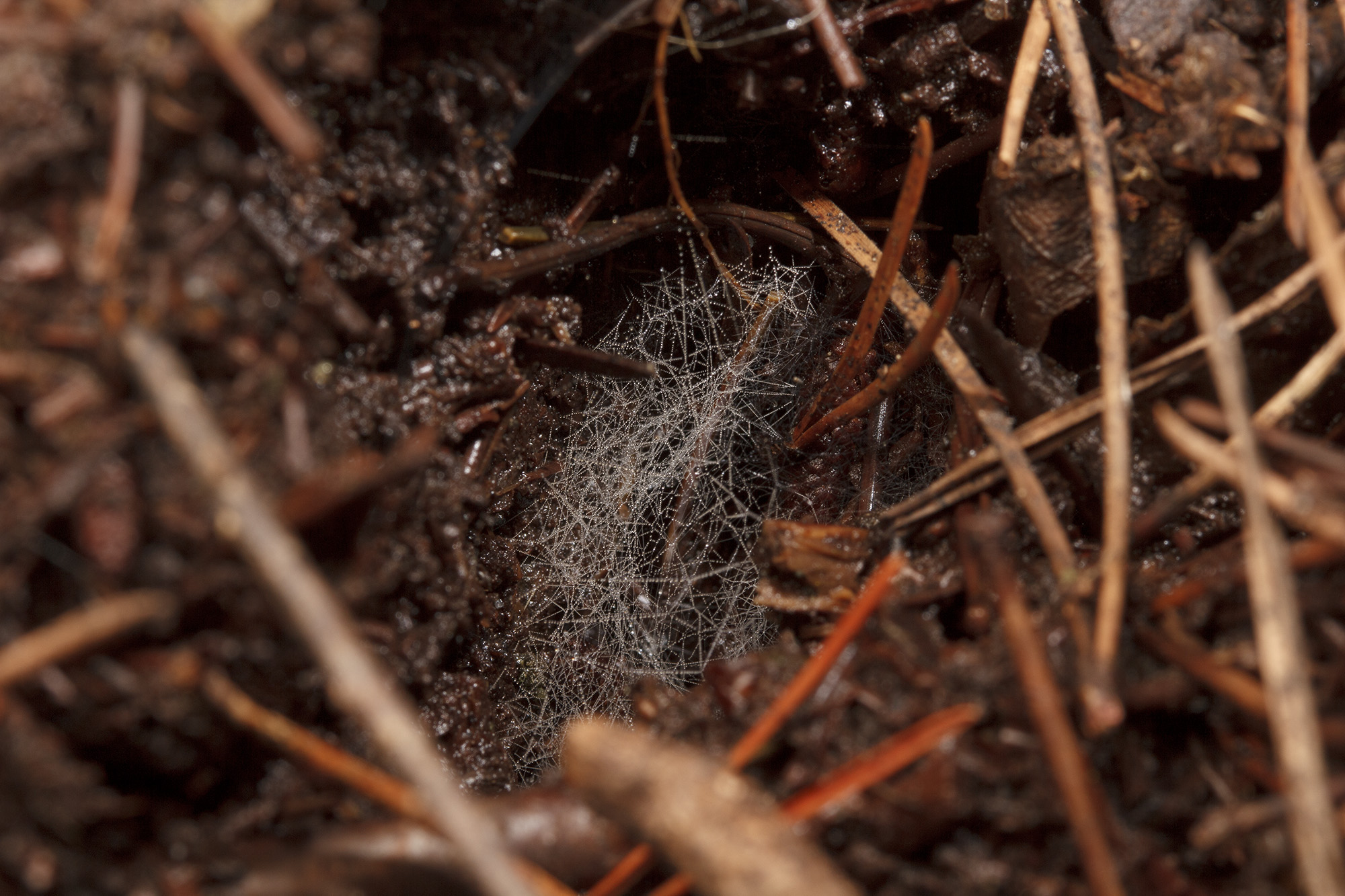
Small sheet-web of Neoantistea magna (photo Sean McCann).
What makes these spiders unusual for web builders is that although the web can be a useful aid for catching prey, it is not necessary. Neoantistea magna have reasonably large eyes and can recognize and hunt prey just as easily off of their webs as on them (Engers & Bultman 2006).
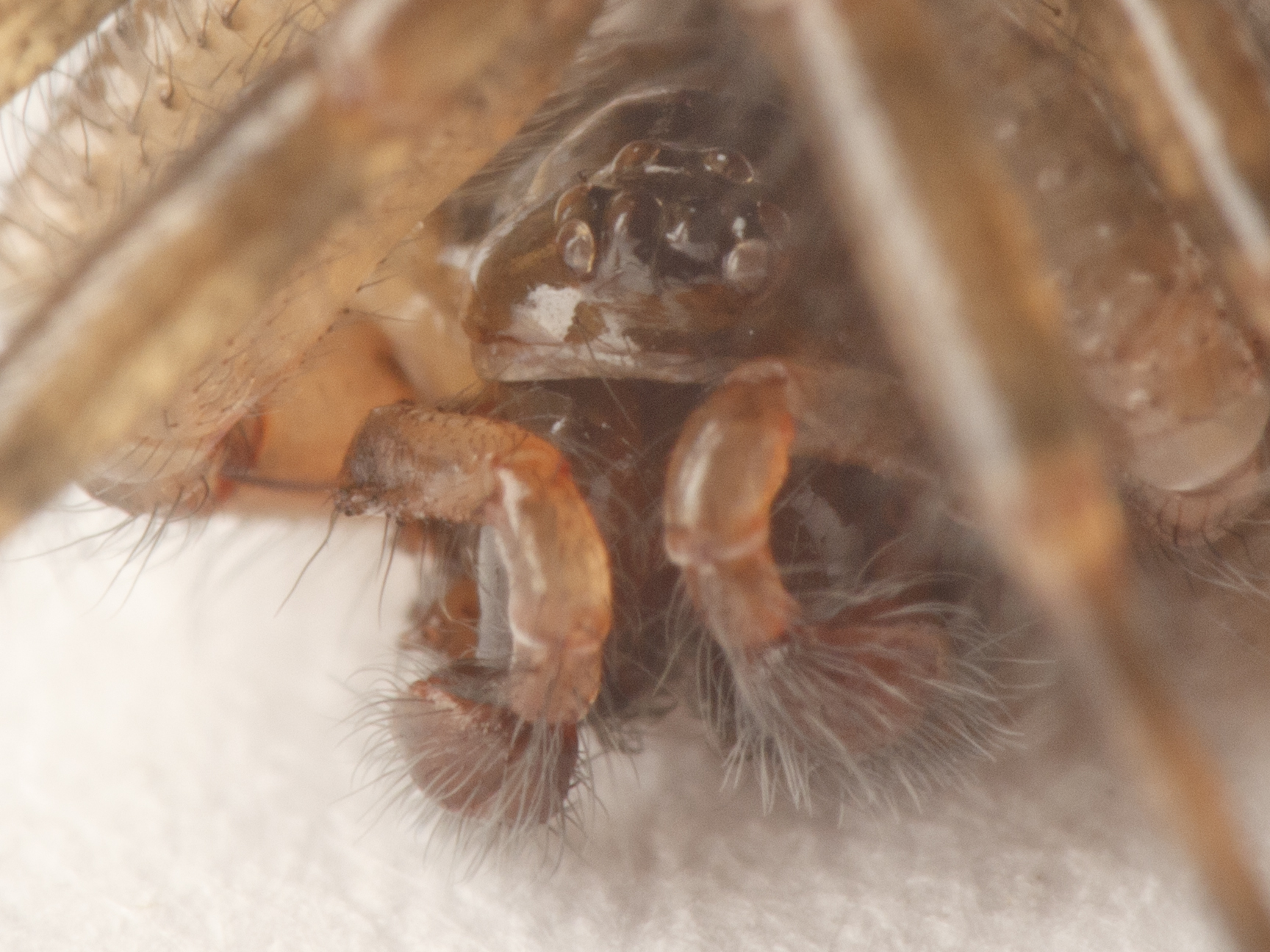
A portrait of a male Neoantistea magna, showing the arrangement of the relatively large eyes (photo Sean McCann).
Although it was easy to identify the spiders we found to genus – the distinctive spinnerets leave no doubt as to the family, and of the North American members of the Hahniinae, Neoantistea is the only genus of web builders – determining the species was another matter entirely. Usually spider identification relies on close examination of the genitalia.
To ID this handsome fellow, two of the key features were the tibial apophysis and the patellar spur, tiny protrusions of the pedipalps which are very difficult to see without a microscope (here’s a diagram of the segments of the pedipalps).
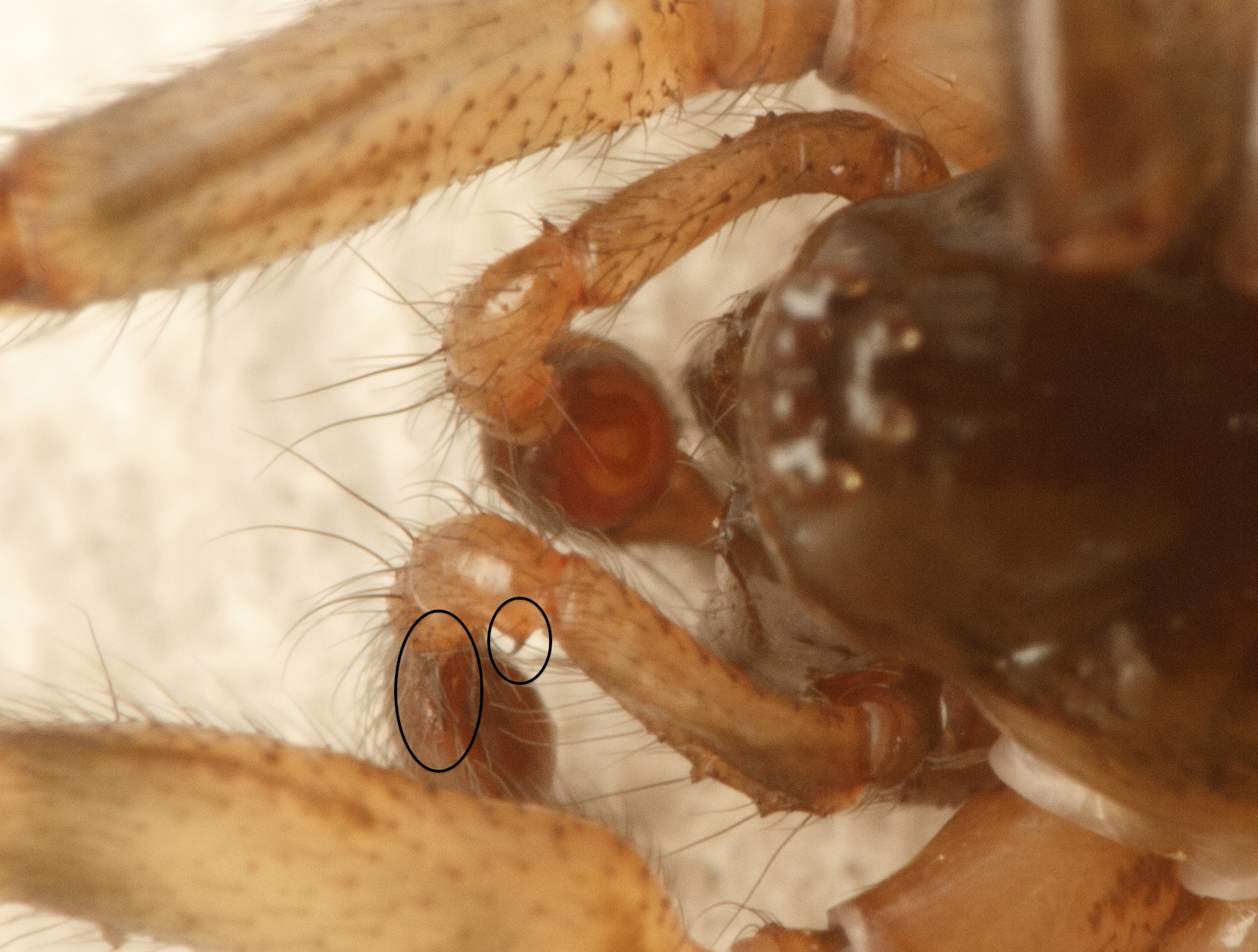
The key to identifying spiders often lies in the features of their elaborate genitalia. Here the large curved outgrowth on the tibia and the hooked spur on the patella of the pedipalp are circled (photo Sean McCann).
Speaking of genitalia, although very little is known about the biology of Neoantistea magna, there is one report of mating behaviour (Gardner & Bultman 2006). During copulation, the male clasps the female with his first two pairs of legs. The robust femur and tibia (see leg segment diagram) on each of these legs are studded with a double row of tubercles, giving them a serrated look.
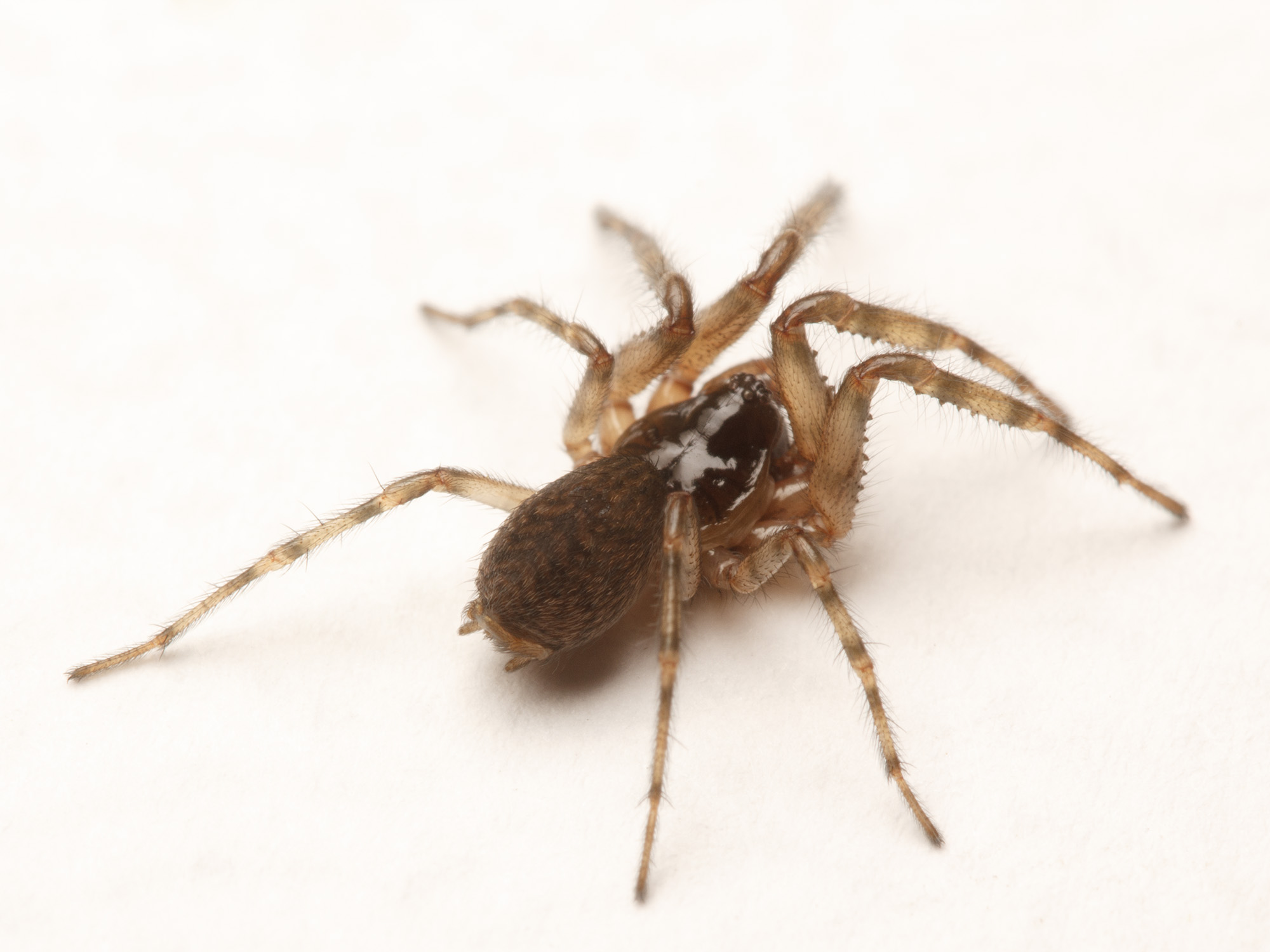
Male N. magna. Note the burly front legs, presumably modified for grasping the female (photo Sean McCann).
Although the female may attempt to disengage from her partner, he is able to maintain a firm hold with his rather spectacularly modified legs and continue copulation.
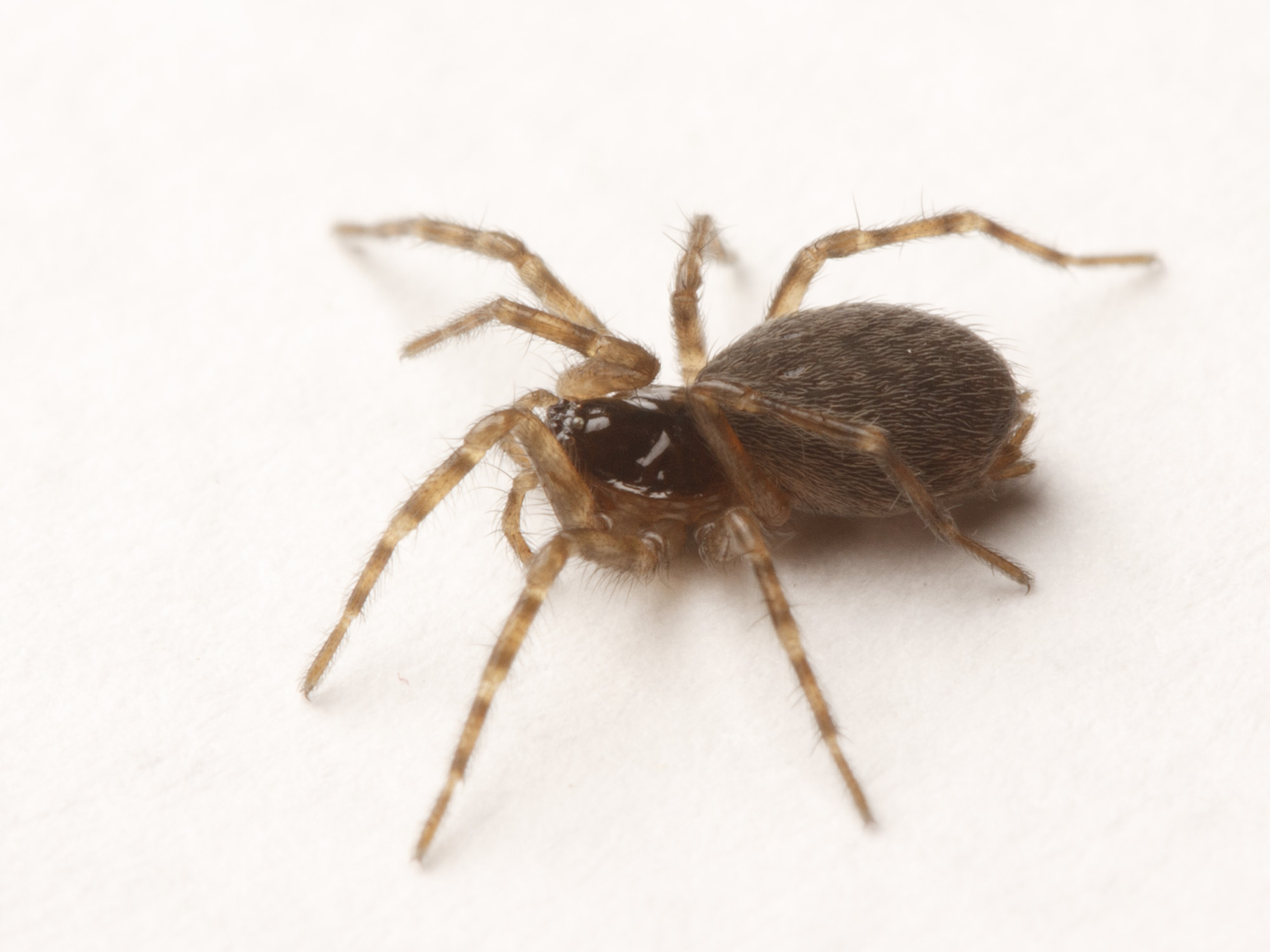
Female N. magna, with slender front legs (photo Sean McCann).
Fun with etymology: The genus name Neoantistea means “new Antistea”. Antistea comes from the Latin word antistes, which means “one who stands in front of a temple, overseer, high priest”. Why were these tiny spiders given such a grandiose name? It’s a mystery.
References
Engers, W., & Bultman, T. (2006). Foraging Habits of Neoantistea magna (Araneae: Hahniidae).
Gardner, D., & Bultman, T. (2006). Natural History and Reproductive Biology of a Hahniid Spider in Southwestern Michigan.
Opell, B. D., & Beatty, J. A. (1976). Nearctic Hahniidae (Arachnida: Araneae). Bull Mus Comp Zool Harvard Univ.

